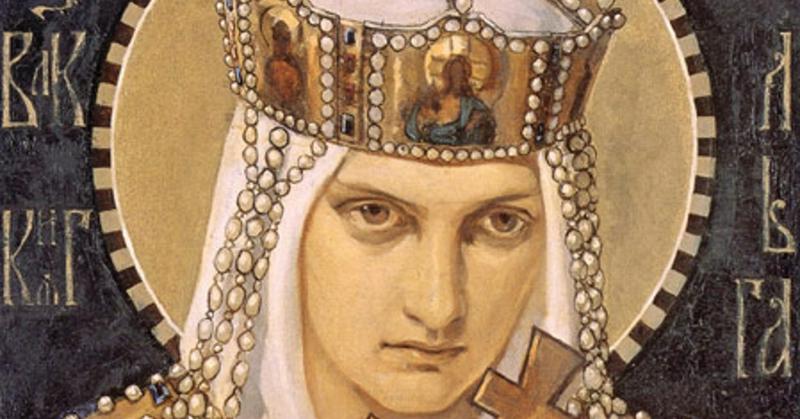Hell Hath No Fury Like Princess Olga Of Kiev
By | April 25, 2022

In 945 C.E., a Drevlian convoy of diplomatic messengers arrived at the castle of Olga, the Grand Princess of Kiev, to inform her that their ruler had murdered her husband, Igor, by tying him to two trees and slowly ripping him apart with ropes after he demanded too much in tribute. Rather than ignite a war, however, the Drevlians offered Olga the option to marry their Prince Mal, which they thought would be especially kind, seeing as her son was only three and no woman had ever ruled the Kievan Rus before. To their delight, the princess accepted the offer and told them to wait in their boat and come back in the morning to make arrangements.
To their horror, however, this was no honor but a trap, as the princess had ordered her guards to spend the entire night ripping up the floor and digging a deep hole within the castle. The Rus guards threw the Drevlians into the hole and buried them alive, but it wasn't enough for Olga. Hellbent on avenging her dearly departed husband, she embarked on a series of revenges, each more ghastly than the last.

Next, she sent a message to the Drevlians that she had accepted the offer to marry Prince Mal and requested that he send her his top advisors to make the needed political arrangements for their union. Perhaps not the most intelligent ruler to have ever lived, Mal agreed. Upon their arrival, Olga offered the Drevlian advisors a bath to wash away the grime of their long trip, but they were met not with water but fire as the doors of the bathhouse locked behind them and the princess ordered her men to set the entire building ablaze.
Finally, she set out for Iskorosten, the Drevlian town where Igor was murdered, after sending her final message instructing them to “prepare great quantities of mead in the city where you killed my husband, that I may weep over his grave and hold a funeral feast for him.” When she arrived, she told Mal that his delegates would arrive the following day and they should go on with the feast. Once his court was sufficiently drunk, Olga ordered her army to attack, and the local scribe estimated that around 5,000 Drevlians were slaughtered.

Obviously, a major conflict broke out between the now-warring factions, but the Rus siege dragged on for over a year. Finally, Olga offered a cease if they bent the knee and gave her tribute, and the relieved Drevlians accepted and were even delighted that the tribute was a mere six birds per household, three pigeons and three sparrows. By then, however, they should have known that nothing would satisfy the princess, who returned their flying tribute with a bit of sulfur on their feet. When they landed in their nests or atop roofs, they ignited, and the entire city burned to ash. Those who made it out of the flames alive were captured outside the city and killed, though Olga is said to have allowed the elderly and children to live, if only to be sold into slavery later. She went on to be a popular ruler, even defending Kiev from siege again in 968, until she abdicated her regency when her son was old enough to take the throne.

